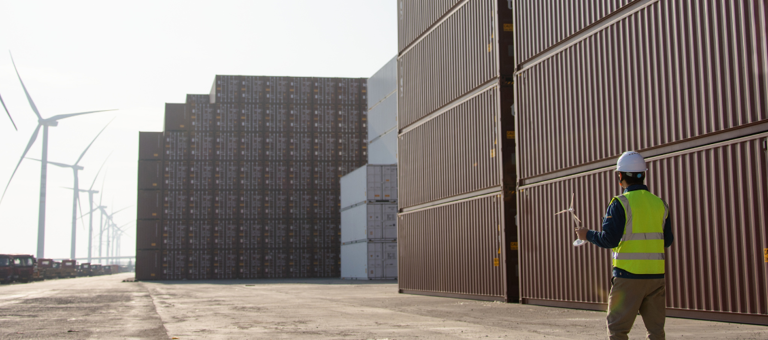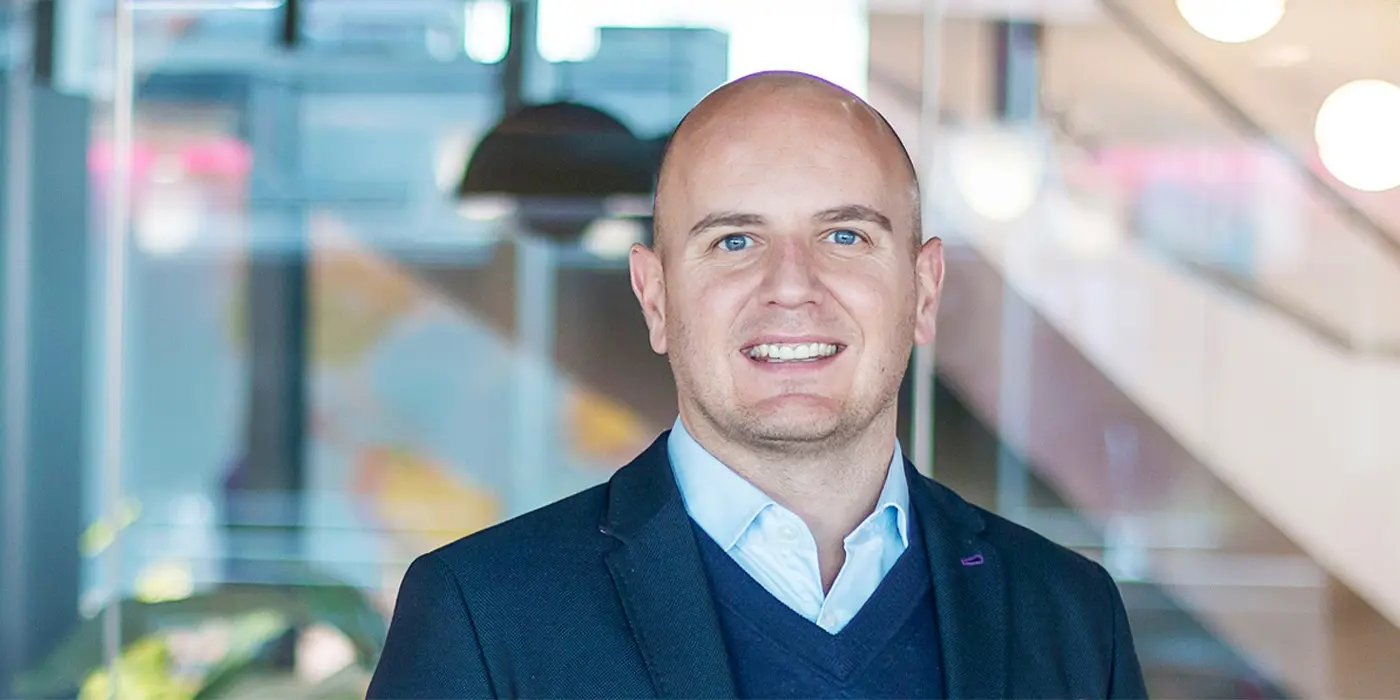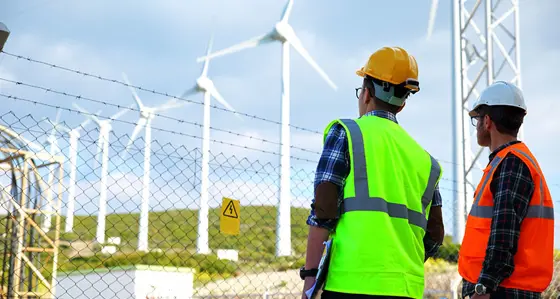
Progress amid uncertainty: How complex industries are driving decarbonisation
6 min read 28 July 2025
In July 2025, Baringa brought together representatives from a range of sectors to discuss decarbonisation and power access challenges. From telecoms and retail to the built environment and critical infrastructure, our vibrant discussion focused on how companies are driving forward their renewables strategies despite:
- Evolving emissions reporting frameworks, including moving to hourly reporting, and the implications for 100% renewables claims
- Credibility concerns surrounding Renewable Energy Guarantees of Origin (REGOs) and other Energy Attribute Certifications (EACs)
- Challenges in securing grid connections
The goal posts are shifting on reporting frameworks. How are companies managing?
The Greenhouse Gas (GHG) Protocol is running a consultation process on making significant changes to reporting frameworks for Scope 2 emissions. Options including moving from the current market-based standard to hourly matching of MWh, which the Science Based Targets Initiative (SBTi) is also advocating for in its revised Corporate Net-Zero Standard. The Emissions First Partnership is also advocating for a move to an impact-based approach based on hourly data, which involves matching net emissions impact of demand and renewable generation.
These proposed developments are causing uncertainty as organisations consider the complexity and costs involved in more granular reporting standards, and how to procure renewables in a way that’s fit for purpose over the long term.
Hannah Simmonds, corporate decarbonisation expert at Baringa, explained that she’s seeing corporates take six general approaches:
- Doing nothing: Stopping buying energy certificates and passively decarbonising alongside grid decarbonisation.
- Waiting and seeing: Reporting maximum emission reductions for the least cost in line with current GHG Protocol standards, and waiting for confirmation of changes before revising the company’s renewables strategy.
- Self-optimising: Stopping buying EACs and using the investment to reduce energy costs via efficiency projects, self-generation, and power purchase agreements (PPAs) where possible.
- Proactively going 24/7: Maximising claims to hourly carbon-free energy using PPAs, on-site generation, and demand flexibility to demonstrate 24/7 renewables matching.
- Focusing on maximising emissions impact: By investing in renewables deployment based on impact, regardless of location.
- Leading compliance: Wanting to continue reporting zero Scope 2 emissions and to improve the credibility of claims through PPAs and on-site generation, while committing to contracts that will be fit for purpose in future.
Of these approaches, two, three, and four were the most common. However, there was consensus that data availability is a key barrier to achieving more mature categories. Delegates agreed that securing access to hourly data in the UK can be challenging, let alone in less developed geographies where companies have a footprint.
One of our contributors is aiming for category six, leading compliance. They discussed how the company achieved its 100% renewable electricity target last year, including across challenging markets with low renewables penetration and / or data availability. They explained: ‘We’re likely heading towards 24/7 carbon-free energy, and are exploring the art of the possible. Getting the granularity of data from our own consumption and our supply chain is challenging, so we’re currently looking at what renewables electricity purchasing will look like for us – and where we’re going to drive the most impact. We’re aiming to be ready for whatever may come, and the solace for us is that everyone will be in the same boat when it comes to new market messaging around 100% renewables.’
What if you suddenly can’t report zero Scope 2 emissions?
Yes, everyone will be in the same boat from an external messaging perspective, and there was consensus that consumer messaging in particular becomes easier if the whole sector changes reporting approach at the same time.
However, there are other implications of not being able to report zero Scope 2 emissions. Another contributor from an aviation company is at the other end of the spectrum to our first when it comes to its decarbonisation journey. Aviation is one of the most challenging sectors to decarbonise, explaining that explained their aim to run an electric airport on the ground by 2035: ‘Our big challenge is sourcing the two to four times more electricity we need, at an affordable cost. The business cases for our decarbonisation projects are predicated on Scope 2 being zero, which we achieve by purchasing REGOs. We acknowledge the credibility challenges with REGOs, but without them, it may become hard to drive the projects essential to delivering net zero.’
They also emphasised the importance of considering regulatory stakeholders from a credibility perspective. ‘As a regulated business, we need to demonstrate credibility and affordability to regulators, as well as the airlines that use the airport. For example, one procurement option involves long-term hedges, but we need to consider how the Civil Aviation Authority would perceive this and how it might impact future regulatory set-in periods.’
Do reporting frameworks matter if you can’t access enough renewable power?
The aviation industry isn’t alone in its struggle to source double (or quadruple) its current power requirement. The electrification of transport, heat, industrial processes, and data centres means UK power demand will increase from around 300 TWh today to over 500 TWh by 2040. This is creating pressure on an already constrained grid.
Therefore, as companies grapple with an electrification approach that’s fit for purpose over the long term, they’re hitting a major obstacle: they’re being quoted grid connection dates over 10 years away and costing multiple millions of pounds. This inability to access sufficient power puts them at risk of missing decarbonisation targets, particularly in areas like fleet and heat electrification that require substantial capacity. And for sectors like data centres with major consumption requirements, there are also implications for hitting business growth targets.
A fund manager that owns industrial and data centre assets explained that sourcing grid connections is where they struggle when it comes to decarbonising their development pipeline: ‘We need 20 to 30 MW of connection as a minimum, but that can skyrocket for tenant requirements like cold storage operations and on-site manufacturing. We’re being quoted wait times of 10 to 20 years, with only a transitional offer. This really affects the investment case and has led to disappointed prospective tenants.’ They are sceptical that proposed government, NESO, and Ofgem measures to address grid constraints will be sufficient. ‘Proposed connection accelerator services and connection reforms focus on reprioritising connections and removing spurious requests. But that’s not enough. We need more capacity, where demand is located – and fast.’
How can you become master of your own destiny?
To manage grid connection challenges, several delegates discussed a move towards private wires, although there was recognition that a grid connection is still required to ensure resilience.
Tesco provided a compelling example for taking action despite these constraints. Among its many decarbonisation initiatives, Tesco aims to have a fully electric UK home delivery fleet by 2030 by transitioning to electric vans, as well as carbon neutral operations by 2035. However, Amriene Kalsi, Climate Change Manager at Tesco, explained that access to power is imperative for achieving the 2035 target and a major challenge is getting electrical capacity at distribution centres upgraded to support charging for larger vehicles. ‘Our distribution centres face challenges when it comes to upgrading their grid connections. We’ve needed to look for alternative solutions while we wait for infrastructure improvements.’ Tesco is working with Baringa to identify sites that could secure adequate capacity in a realistic timeframe. For areas that are expected to take longer, Tesco are trialling the use of alternative low-carbon fuels as an interim solution.
The fundamental question: What can you control?
Our discussion boiled down to this key question around control. If you can identify what you can control amid the uncertainty, it’s possible to make meaningful progress despite challenges around changing reporting frameworks and renewables procurement. Whether it’s focusing investments on areas with the greatest emissions impact, identifying interim low-carbon solutions, or collaborating with peers on a sector-wide messaging approach – there are both strategic and tactical steps corporates can take now.
Baringa can help in a range of ways, including with Energy Source, our solution that supports a decarbonised procurement strategy by providing complete visibility of your energy demand and PPA portfolio.
Contact Ryan Thomson and Hannah Simmonds to discuss your decarbonisation challenges and how to drive forward an effective renewables strategy.
Our Experts


Related Insights

Reporting scope 2 emissions: the GHGP's new consultation
The current global standard for how companies report their emissions - set by the Greenhouse Gas Protocol - has long been criticised for enabling uncredible claims to Scope 2 emission reduction. read on to see what this means for you
Read more
The inertia challenge in renewable energy
The shift to renewables is reshaping grids, replacing traditional plants with wind, solar, and batteries. This transition challenges grid stability with lost inertia.
Read more
Fuelling maritime decarbonisation: The role of regasification terminals in unlocking bio-LNG
The maritime sector is under increasing regulatory pressure to reduce its environmental impact, with frameworks pushing for reductions in greenhouse gas emissions through renewable fuels, while biofuels and certification systems play a crucial role in achieving these goals.
Read more
Navigating Germany’s inertia market evolution
Germany’s inertia market launches in 2026, opening opportunities for assets like BESS. Success depends on clearing prices, with early movers set to benefit.
Read moreIs digital and AI delivering what your business needs?
Digital and AI can solve your toughest challenges and elevate your business performance. But success isn’t always straightforward. Where can you unlock opportunity? And what does it take to set the foundation for lasting success?